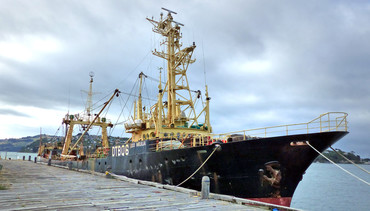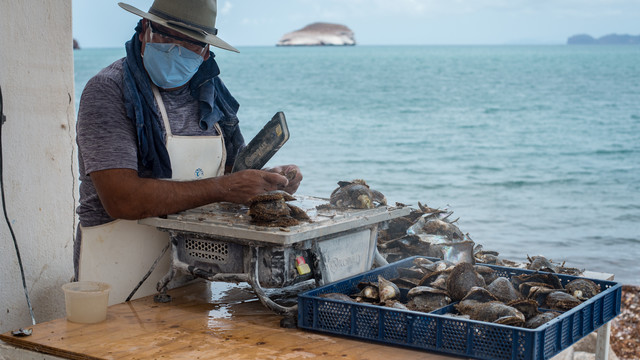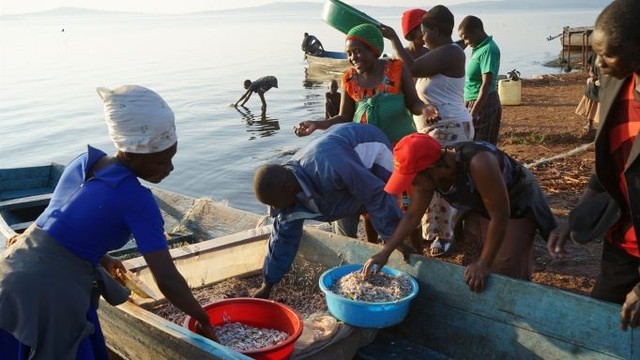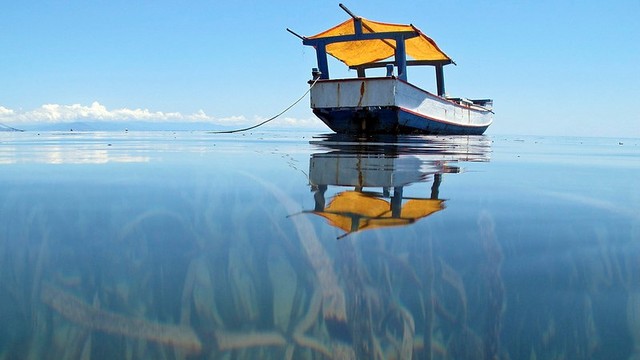Moving a step closer to protecting the high seas
The world is nearing an agreement to manage the half of the planet's surface area that is currently ungoverned. Essam Yassin Mohammed examines the battle for our ocean


Brazil ambassador Carlos Sobral Duarte addresses a meeting to define the key elements of a draft treaty to govern the high seas (Photo: IISD/ENB | Franz Dejon)
Something major happened at the UN headquarters in New York last month – but you probably haven't heard about it. The world moved a step closer to agreeing a treaty that would protect the life of the high seas and be the first law to govern this vast stretch of ocean.
While there is an international UN treaty that deals with the governance of the marine environment up to 200 nautical miles from the shores of every coastal state (commonly known as The Law of the Sea), the rest of the ocean – 50 per cent of the planet's surface area – remains ungoverned.
To address this, back in 2015 the UN General Assembly (UNGA) passed a resolution starting the process for agreeing elements for a possible new treaty. I joined the four rounds of meetings, with the final session aimed at defining the treaty's key elements.
Dangers of a governance gap
The ocean brings multiple benefits, ranging from the oxygen we breathe to absorbing carbon from the atmosphere. Its rich biodiversity provides crucial food and non-food (e.g. pharmaceutical) resources. But lawlessness in these waters has led to widespread abuses: overfishing to dangerous tipping points, dumping crippling amounts of waste, slavery, human and drug trafficking and so on.
Moves to govern the high seas should indeed be celebrated. But it must be noted that, until now, efforts have been limited to protecting sea life and the ocean's biodiversity.
Proposed elements of the treaty include protecting marine protected areas, regulating access to marine genetic resources for pharmaceutical and other purposes, developing benefit sharing mechanism, advancing marine technological transfer and monitoring, and regulating impacts of extractive activities on the high seas.
A deal that achieves this and can be enforced will be a significant step forward.
Towards a fair and inclusive high seas governance
The ocean is a common heritage of all humanity ― it belongs to everyone, now and forever. But not all countries can access the vast benefits of its high seas. Poorer countries do not have the financial or technical means to share in its benefits or help protect it. Because of this, access to marine resources − from fishing to extracting marine genetic resources for scientific research − has not been equitable.
This meeting was an important opportunity to lay the groundwork for change.
Any measures to govern these waters must benefit everyone, where developing countries, particularly the Least Developed Countries, can play an active role in protecting and sustainably managing the ocean.
Status quo is no longer an option
Most countries – particularly those in the developing world – made it clear that the status quo is not an option. From my point of view, it was humbling to see the poorer countries arguing in favour of a strong mechanism to end lawlessness on the high seas. By contrast, richer countries, including the US, Russia, Japan and Iceland (and sometimes China), were reluctant to push for any change.
Evidently, lack of regulation works in favour of these richer countries. These countries have technical capacities to go beyond their territorial waters and fish the ocean to death, or carry on unregulated extraction of marine genetic resources.
The assumption being that a new legally binding instrument could impede their lucrative economic activities
This approach should be challenged on every level: it is becoming increasingly recognised that conservation and sustainable use of marine biodiversity actually builds the prosperity of people and enriches our planet.
Where to from here?
After a strained two weeks of negotiations, Brazil ambassador Carlos Sobral Duarte, who chaired the process, announced that the draft recommendations of the elements of the new treaty had been adopted by consensus. This was followed by a thunderous applause by UN member states and civil society groups.
And, crucially, ambassador Duarte called for the intergovernmental political process to negotiate the terms of the treaty "as soon as possible": this could be as early as next year.
Draft recommendations of a possible treaty to govern the high seas has been adopted by consensus!! #bbnj pic.twitter.com/mxDse1yGEl
— Essam Y Mohammed (@EYMohammed) July 22, 2017
Ambassador Duarte will present his recommendations to the UNGA at its 72nd session this autumn. I am hopeful that the general assembly will start the formal negotiation process.
The foundations are now in place for a new treaty that is fair and equitable for everyone. We cannot afford to keep the status quo. We need measures in place to make sure that 50 per cent of the planet will be sustainably shared with 100 per cent of the world's population and that the ocean is protected for our children, grandchildren and beyond.
Essam Yassin Mohammed (eymohammed@iied.org) is a senior researcher in IIED's Shaping Sustainable Markets research group.




